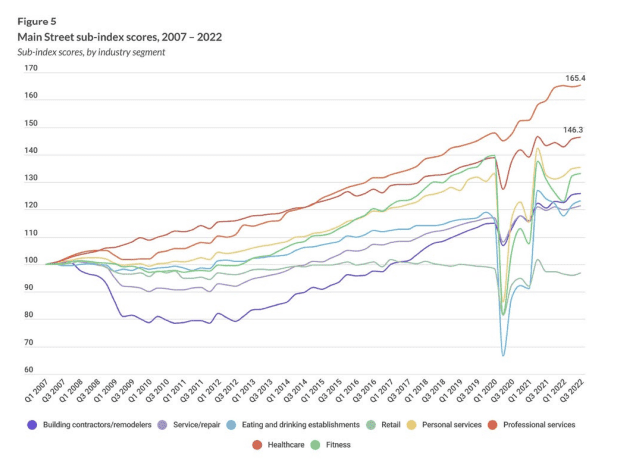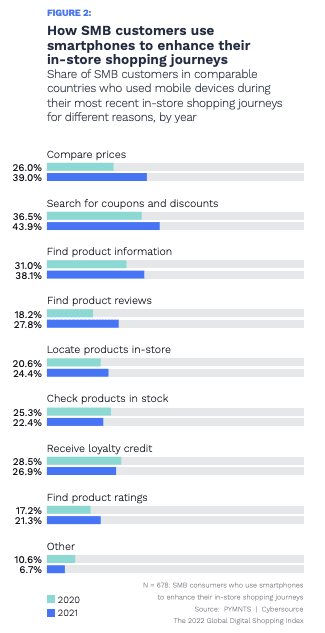Small Business Saturday to Test SMB Mettle and Margins

Wedged between Black Friday (Nov. 25) and Cyber Monday (Nov. 28), the 12-year-old holiday paying homage to the nation’s small businesses was first conceived by American Express in 2010 and then co-sponsored by the Small Business Administration (SBA) in 2011.
After two Christmases and nearly three years of COVID-linked closures, lockdowns and inventory disruptions, 2022 is shaping up to be one of the toughest for small to mid-sized businesses (SMBs).
With the help of the “Shop Small” campaign popularized by American Express, the goal is to get more Americans, for one day, to buy from little local retailers — be that on Main Street or online — versus the multinational industry heavyweights.
Ahead of Saturday’s annual event, American Express and TikTok got the ball rolling early as they announced their own #ShopSmall Accelerator earlier this month as a way to help small business owners reach a new generation of shoppers on Small Business Saturday,” intending to spur $100 billion in SMB social sales through 2025.
Showing how every dollar counts, the Amex-TikTok announcement noted that “Based on data in the Small Business Economic Impact Study from American Express, if every Gen Z and millennial shopper spent $10 at a small business on Small Business Saturday, it would support $2 billion in local economic activity throughout the U.S.”
See Also: American Express Taps TikTok To Reach Gen Z Shoppers
Although much younger and narrower than the ubiquitous commercial catchall Black Friday, Small Business Saturday has been gaining traction and respect over the years, with Amex reporting that spending by U.S. consumers at independent retailers and restaurants on Small Business Saturday last year was up 18% from 2020 to $23.3 billion.
Although consumer intentions to shop local are strong, increasingly ingrained buying habits can be hard to change or be matched by smaller SMBs struggling against inflation, labor shortages, wage hikes and more.

PYMNTS’ Main Street Index Q3 2022: The Post-Pandemic State Of Play For Main Street Businesses notes that throughout 2022, “global macroeconomic volatility has had reverberating impacts on consumer sentiment, supply chains and access to finance, which has curtailed Main Street’s growth,” but outcomes vary widely across sectors.
Read: Main Street Index Q3 2022: The Post-Pandemic State Of Play For Main Street Businesses
Embattled But Unbowed
SMBs that adopted digital tools during the pandemic and in its aftermath outperformed large retailers in key areas, pushing SMB index scores higher. That resilience will be tested this weekend as consumers spread sparse dollars between competing sales.
The SMBs’ Guide To Boosting Holiday Sales Report, a PYMNTS and American Express collaboration, noted that in 2021 “68% of companies that upgraded their software and technology to process digital transactions feel their revenues will experience a year-over-year increase. To compete with larger corporations this holiday season, SMBs should consider implementing online purchasing capabilities and automated payment processes for increased efficiency, lower costs, and improved customer satisfaction.”
What was true then is true now, and this year’s Small Business Saturday event is in many ways more crucial than those of the COVID-era, as SMBs are taking a walloping due to runaway inflation and related factors. What remains to be seen is how those Small Business Saturday shoppers will react this year to a highly promotional discounting onslaught from the majors.

See also: Producer Prices Signal More Margin Pressure for Main Street Retailers
According to The 2022 Global Digital Shopping Index: SMB Edition, a PYMNTS and Cybersource collaboration examining the behaviors of over 13,100 consumers and 3,100 merchants across six nations, found that SMB digital adoption — primarily mobile — has kept them competitive.
Per that study, “75% of SMBs currently provide apps that allow consumers to locate items in-store, for example, and 70% offer mobile-specific or mobile-optimized sites. Features like these allow SMBs to support the integrated, cross-channel shopping experiences that consumers have come to expect.”
Read: The 2022 Global Digital Shopping Index: SMB Edition
For all PYMNTS retail coverage, subscribe to the daily Retail Newsletter.
